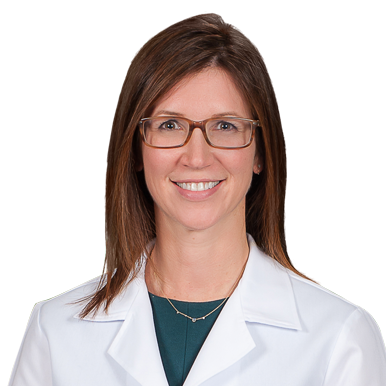 There are many tools that help women estimate their chance for having breast cancer. But, filling out a “risk calculator” doesn’t always provide a clear picture as to why you may be more likely to develop the disease – and importantly, if there is anything you can do to prevent it.
There are many tools that help women estimate their chance for having breast cancer. But, filling out a “risk calculator” doesn’t always provide a clear picture as to why you may be more likely to develop the disease – and importantly, if there is anything you can do to prevent it.
We’ve pulled together a number of resources to help women know more about the factors that can place them at high risk for breast cancer. It’s important to note that being “high risk” doesn’t mean that you will absolutely, positively, without question develop breast cancer. It means that when statistically compared to other women, your chance is higher. And, sometimes only slightly.
Know Your Story
Family history is an important aspect when calculating risk. Women should understand their family history as it relates to breast cancer just as they would for other types of illnesses, say heart disease or autoimmune diseases. It’s important to identify any family member who has had breast cancer and their relationship to you. This relationship is an important factor in determining when you should have your first screening mammogram. Having a baseline, along with annual exams, can help you keep a close watch on any changes in your breast tissue. Often, when breast cancer is detected in a woman who is her 50s, the stage is more advanced and more difficult to treat.  If you have any elevated risk, we recommend having a screening mammogram starting at age 40 or in some cases even earlier. We encourage high-risk patients to be their own best advocate and talk with their primary healthcare provider about the importance and peace of mind a screening mammogram can bring.
If you have any elevated risk, we recommend having a screening mammogram starting at age 40 or in some cases even earlier. We encourage high-risk patients to be their own best advocate and talk with their primary healthcare provider about the importance and peace of mind a screening mammogram can bring.
Understand What High Risk Means
A “high risk” designation can be determined several ways. There may be one specific factor that puts a patient into this category or a combination of factors working together can increase risk.
The Susan G. Komen Foundation provides a list of factors that may lead to elevated risk:
- Breast cancer gene mutations or a known genetic mutations (BRCA1 or BRCA2)
- A first-degree family member who’s had breast cancer
- Strong family history of breast cancer
- Personal history of invasive breast cancer or ductal carcinoma in situ (DCIS)
- Lobular carcinoma in situ (LCIS) or atypical hyperplasia
When combined, these factors may also place a patient at a higher risk for breast cancer:
- Breast density
- Family history
- Body weight and weight gain
- High bone density
- Excessive alcohol consumption
Of note, family history is included on both lists. This is an important marker for an elevated breast cancer risk. Even so, only 13% of all women diagnosed with breast cancer have a family history of the disease.
Review Breast Screening Guidelines
Within the last year, various medical organizations have made changes to their recommendations about when to start mammogram screenings. Mammography – specifically 3D mammography – remains the single best screening tool for detecting breast cancer at its earliest possible stage. For women who are at an increased risk, it’s important to be informed, to advocate and to get your annual mammogram.
At Wake Radiology, we continue to believe that high quality annual mammography starting at age 40 remains a woman’s best chance of early detection of breast cancer and saving lives. Here are some resources that support this recommendation:
- Wake Radiology’s response to guideline changes
- A video from the Society of Breast Imaging to help end confusion about when to get a mammogram
- Why early detection is your best protection
- A video about who how 3D mammography help detect more breast cancers
Reduce Your Risk
Every day, we all take steps to mitigate our risks. From wearing a seatbelt or bike helmet to making healthy food choices, we look for ways to keep our family and ourselves safe. There are steps that a woman can take to reduce her risk for developing breast cancer, such as breastfeeding, getting regular exercise and reducing alcohol consumption. Again, the Susan G. Komen website offers information about how best to reduce your risks.
Talk With Your Doctor
Understanding your personal risk of breast cancer can be empowering and set you up to have an actionable discussion with their healthcare provider. We encourage women to be their own advocate during these conversations.
Some important topics to discuss include:
- When to have your first mammogram
- The benefits of a 3D mammogram screening
- Why you should have your screening at an imaging office accredited by the American Center for Radiology
- The importance of having your mammogram read by a dedicated breast imaging radiologist
- Whether genetic testing is recommended based on your family history
- A plan for identifying any changes in your breast health
Know More
Breast cancer risk is not black and white – there are many nuisances in determining risk and detecting cancer because every woman is different. Breast tissues changes, as do your risks, as you age. Knowing as much as you can about your current breast health can help calm fears, reduce anxiety and plan for action. Our team of breast imaging radiologists is constantly working to increase breast cancer awareness. The Know More page on our website may be a good resource as it includes links to videos, blogs, inforgraphics, breast risk calculators and more.
If you need to have a screening mammogram, you can request an appointment online or contact our scheduling team at 919-232-4700. As the Triangle leader in 3D mammography, we have installed 10 3D mammogram units at various offices throughout the Triangle to make this revolutionary breast imaging technology easily accessible to women in our area.
